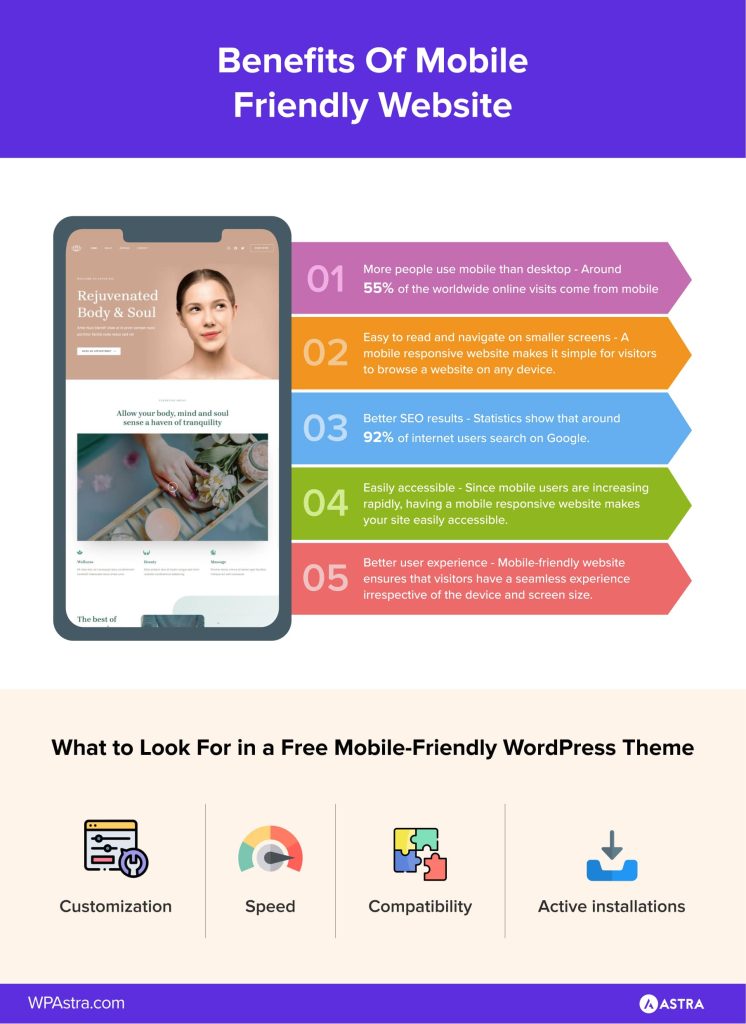
The Ultimate Overview to Mobile Optimization: Approaches for Enhancing Website Efficiency on Smartphones and Tablets
The techniques for improving site performance on mobile platforms go beyond simple adjustment; they incorporate a comprehensive strategy that entails responsive style, rate optimization, content approaches, and individual experience enhancements. By diving right into the details of mobile optimization, organizations can not just fulfill customer assumptions however additionally remain in advance in a competitive electronic landscape.
Value of Mobile Optimization
Mobile optimization plays a crucial duty in improving customer experience and driving conversion prices in the ever-evolving electronic landscape. With the raising usage of smart devices and tablets for surfing the web, ensuring that websites are optimized for mobile devices has actually come to be imperative for services - Mobile Optimization. A mobile-optimized website not just adjusts seamlessly to various screen sizes but likewise tons rapidly, giving customers with a smooth and delightful surfing experience
In today's busy world, users anticipate instantaneous accessibility to information on the move. A web site that is not maximized for mobile gadgets threats shedding possible clients due to reduce filling times or a bad interface. By purchasing mobile optimization, organizations can satisfy the requirements of their mobile target market, resulting in higher involvement and increased conversions.
Furthermore, online search engine like Google focus on mobile-friendly sites in their positions, making mobile optimization important for boosting presence and drawing in organic website traffic. Mobile Optimization. Overall, the value of mobile optimization can not be overemphasized, as it directly impacts customer contentment, conversion rates, and general service success in the electronic realm
Responsive Layout Techniques
Implementing responsive design methods makes sure that internet sites dynamically readjust their layout and web content based on the customer's tool display size, providing a consistent customer experience across numerous systems. One of the most usual approaches used in responsive style is creating fluid grids that allow content to resize proportionally to the display size. This makes certain that aspects on the webpage preserve their loved one spacing and arrangement, maximizing the viewing experience for customers on various tools.
Furthermore, using adaptable photos that can scale with the size of the viewport aids stop pictures from being chopped or misshaped on smaller sized displays. CSS media queries play a vital role in responsive design by enabling designers to apply particular designs based upon the gadget attributes such as screen size, height, and orientation. By leveraging media queries, websites can adjust their design and design to suit official site smart devices, tablets, and desktop screens perfectly.
Integrating responsive layout techniques not just improves user experience but also adds to improved online search engine positions, as search engines like Google focus on mobile-friendly internet sites in their mobile search results page. By accepting receptive layout, websites can cater to the diverse needs of users accessing content on a variety of tools, eventually driving interaction and conversions.
Speed and Performance Optimization

One secret technique is optimizing images and multimedia content to reduce data dimensions without endangering top quality. Compressing pictures, leveraging modern picture layouts like WebP, and careless filling offscreen photos are reliable methods to speed up tons times (Mobile Optimization). Decreasing HTTP requests, leveraging web browser caching, and reducing server action times are vital actions in boosting efficiency.
Applying a web content delivery network (CDN) can also substantially enhance website rate by dispersing material across numerous web servers globally, decreasing latency for individuals accessing the site from different areas. Focusing on crucial above-the-fold content and deferring non-essential scripts can additionally improve viewed efficiency. By concentrating on rate and performance optimization, sites can provide a smooth and enjoyable user experience on smart phones.
Mobile-Friendly Material Approaches
Mobile-friendly web content approaches involve customizing the presentation of details to match the smaller screens and on-the-go nature of mobile phone and tablet computer individuals. In addition, damaging up content into shorter paragraphs official website and using bullet factors can aid improve readability and make it easier for users to take in information swiftly.
Including appealing visuals, such as pictures and video clips enhanced for mobile viewing, can likewise boost the overall user experience. These visuals should be appropriate, premium, and tons swiftly to avoid customers from shedding passion. Integrating interactive aspects like tests, polls, or studies can improve user interaction and motivate energetic involvement.
User Experience Enhancements
Structure on the structure of mobile-friendly content techniques, improving individual experience requires optimizing every touchpoint to ensure smooth interaction and fulfillment for mobile users. One critical facet of boosting customer experience on mobile tools is ensuring fast packing times.
In enhancement to speed up and receptive layout, simplifying navigation is crucial for a positive the original source customer experience. Clear and intuitive navigation menus, famous search bars, and tactically placed call-to-action switches can assist customers easily locate what they are trying to find on a mobile site. Optimizing forms for mobile users by decreasing the variety of fields and utilizing auto-fill functions can also improve the total user experience. By focusing on these customer experience improvements, web sites can effectively engage and preserve mobile visitors.
Conclusion
In final thought, mobile optimization is crucial for boosting site performance on smart devices and tablets. By implementing receptive style methods, optimizing rate and efficiency, producing mobile-friendly content, and improving customer experience, businesses can properly get to and engage with their mobile audience. It is necessary for sites to adapt to the enhancing mobile use patterns in order to stay competitive in the digital landscape.